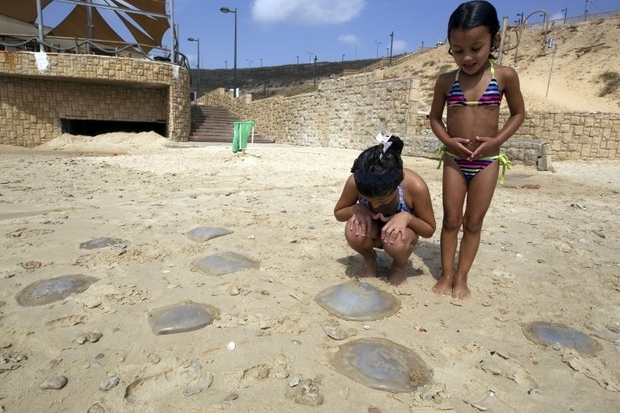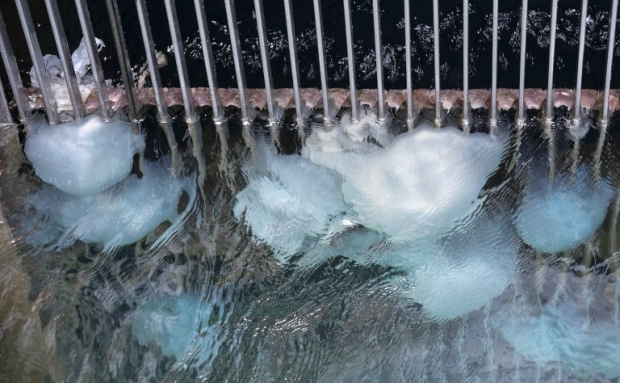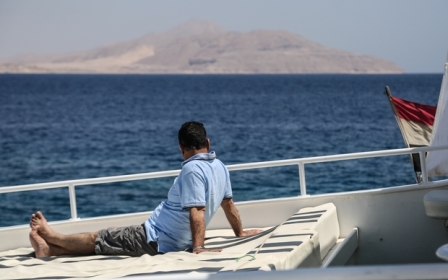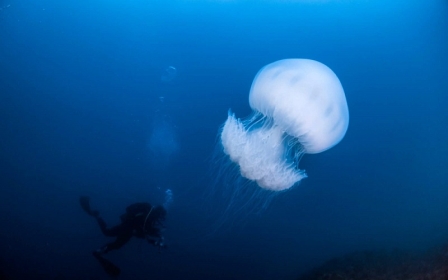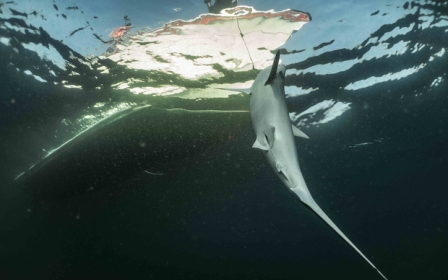Egypt's jellyfish invasion: Is new Suez canal a free ride to the Med?
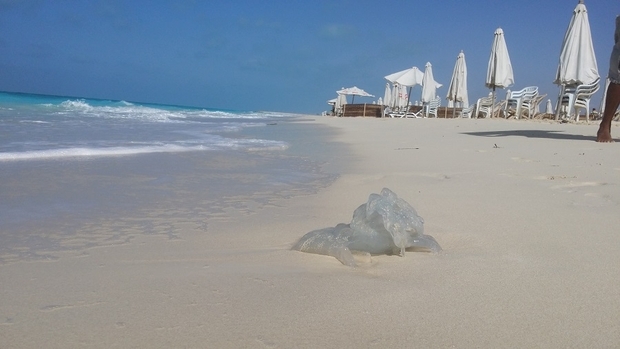
As summer kicks in and temperatures soar, a beach holiday on Egypt's north coast is something many families from the hectic, busy capital of Cairo dream about. One early summer morning last month, 44-year-old Sahar packed her children's bags and drove for two hours to her chalet in a resort on the Mediterranean sea, about 250km away.
Just minutes after their arrival, her children rushed to the pristine sea but returned screaming, shocked by the large number of jellyfish plaguing the beach.
"For 10 days, jellyfish have besieged us. They deprived us of being able to swim in the sea and stung my two daughters. It was an awful holiday," said Sahar, who asked to use her first name only.
Sahar had been planning the holiday with her three children at the Marseille beach resort, but unfortunately they were met with swarms of jellyfish that washed up on its shores last month.
"We didn't go to the beach, we didn't even witness a single sunset, a moment that I wait for every year," she said.
"For the whole holiday, they were afraid and didn't approach the beach and stayed at the pool. It was like we were all held hostage by the jellyfish," she sarcastically added.
'It was like we were all held hostage by the jellyfish'
- Sahar, businesswoman
Sahar said her fate was better than one of her friend's whose son got stung on his whole face.
"It is a lost holiday. This year’s [vacation] doesn’t count," she disappointedly said.
The ministry of environment issued a series of statements reassuring beachgoers that the kinds of jellyfish found on the north coast did not pose any "serious danger" to people, after photos and videos of the large number of jellyfish spread on social media.
"The current jellyfish in the sea are not dangerous, they only sting and this sting is not deadly," Mohamed El-Essawy, head of the northern nature reserves at the ministry of environment, told MEE.
According to the ministry, the main species behind the phenomenon is the Rhopilema nomadica, or nomad jellyfish, once only found in tropical waters. The ministry said in a statement on 28 June that the "phenomenon was unprecedented" on the western part of the north coast.
Translation: I wish I could go on holiday for the summer [on the north coast], but there are too many jellyfish.
Translation: Jellyfish are all over the north coast and they say the reason is the Suez Canal. Did anyone question the minister of environment about this? Or is there any scientific authority in Egypt to tell us the reasons behind this phenomenon?
Translation: Even if you decide to get out of the depression you have and go to the seaside for example, you’ll die from the jellyfish stings.
Financial loss
Ahmed Mostafa, a pharmaceutical audit manager, told MEE that despite having gone to the north coast, he had had “no summer vacation” this year. “We went and we returned, without a holiday. Can you imagine a summer vacation without a beach?" the father of two said.
“It would have been better to stay around the pool in Cairo,” he said.
At the Marina Resort, a prominent hub for upscale beachgoers in Egypt, shop owners that rent out umbrellas and chairs and sell snacks and beverages on the beach say they have suffered grave financial losses since the jellyfish took over.
"We wait for the summer to open our shops. It's our only season. The north coast is a ghost city from 1 October," Ahmed Ali, who runs one of these small shops, told MEE.
'The sea is our capital. The jellyfish attacked it and pushed the people away'- Ahmed Ali, shop owner
Ali, an engineer, partnered with his friends and funded their small shop with 60,000 EGP ($3,333).
"The sea is our capital. The jellyfish attacked it and pushed the people away," Ali said. "It's a catastrophe. We are lost," he added.
Sea turtles released
On 10 July, the ministry announced the release of 40 large sea turtles into the waters of the north coast to feed on the jellyfish in the Mediterranean.
He added: "They suffocate and die. That has caused a dramatic decrease in their numbers and consequently an increase in the number of jellyfish."
Since the release of the turtles, beachgoers say they have witnessed a drop in the number of jellyfish last week, but many have still reported getting stung.
The Suez Canal
The nomad jellyfish first invaded the Mediterranean through the Suez Canal in the 1970s. In 2015, President Abdel Fattah al-Sisi inaugurated the multi-billion-dollar expansion of the Suez Canal, including the deepening and widening of the old canal and the creation of a 25-kilometre parallel waterway.
The expansion was expected to garner more revenue and reduce the transit time across the closest link between Asia and Europe from 18 to 11 hours.
READ MORE: Invasion of the stinging jellies: How the new Suez Canal is destroying the Med
Last month, Egypt's environment ministry denied claims that the latest expansion in the Suez Canal is one of the main reasons behind the hike in the number of jellyfish on its north coast.
The ministry believes unidentified parties have attempted to spread rumours for political purposes. It added that the nomad jellyfish have been in the Mediterranean since the late 1970s, without mentioning how they first entered these waters.
It insisted that "climate change, pollution, illegal fishing and the decrease in the number of sea turtles" were behind the increase in the number of jellyfish in the Mediterranean.
But some environmental experts were not swayed, stressing that the Suez Canal is to blame.
New MEE newsletter: Jerusalem Dispatch
Sign up to get the latest insights and analysis on Israel-Palestine, alongside Turkey Unpacked and other MEE newsletters
Middle East Eye delivers independent and unrivalled coverage and analysis of the Middle East, North Africa and beyond. To learn more about republishing this content and the associated fees, please fill out this form. More about MEE can be found here.





